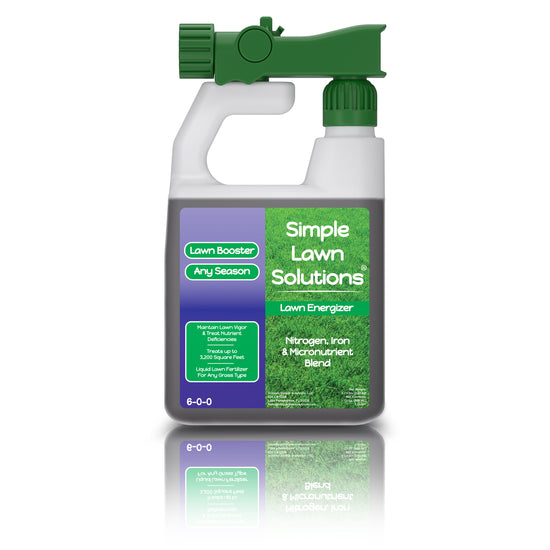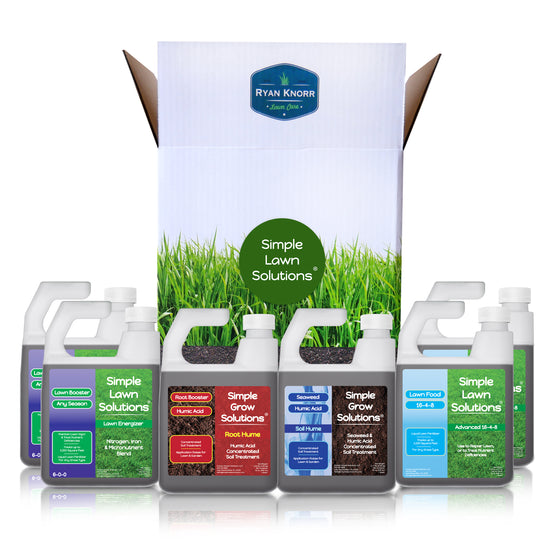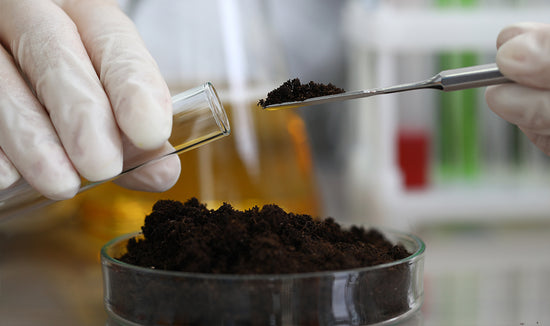There are six soil-derived macronutrients that are required for the growth of your lawn. Categorized as macronutrients based on the percentage of leaf tissue that they comprise, these nutrients are nitrogen, phosphorus, potassium, calcium, magnesium, and sulfur. Of these, potassium is utilized by grass in the second greatest quantity, exceeded only by nitrogen. Potassium comprises around 1-2.5% of turfgrass leaf tissue.
Though 1% may not seem significant, consider that carbon, hydrogen, and oxygen make up around 95-96% of the tissue. With the remaining percentage of the tissue concentration divided between 17 different elements, it’s evident that potassium plays a critical and dominant role in plant function, structure, and health.
What does Potassium do for lawns?
Plant enzymes are substances formed by plant nutrients that catalyze the reactions of plants that generate all functions. For example, the enzyme amylase is critical to the process of germination as it breaks down starch in the seed so that the embryo can begin to feed and grow. Potassium is a cofactor in more than 40 plant enzymes, indicating a wide range of dependency on the nutrient for growth. One of the more recognized roles that potassium plays is its regulation of the opening and closing of plant stomata, or the tiny holes in the leaf surface that allow gas exchange. When potassium levels are sufficient, the plant is able to keep its stomata tightly closed during times of drought to prevent moisture loss. This reduction of respiration allows the plant to preserve much-needed energy during times of stress. Potassium also contributes to root growth, disease prevention, cell elongation, and cell growth.
Potassium for Winter Lawn Care
As winter approaches, turfgrass roots begin to accumulate and store potassium to enhance hardiness through the cold months. Sufficient levels will strengthen cell walls to prevent frost damage, preserve nutrients, and stave off winter diseases such as snow mold. While your lawn may not be actively growing during the winter, the roots and shoots are still vulnerable to damage that can inhibit effective emergence from dormancy and lead to unsightly areas during the spring and necessity for spring seeding.

How to Identify Potassium Deficiency Symptoms
Potassium deficiencies are most common in sandy soil. The most significant visual indicator in your lawn will be diffuse yellowing and stunted growth. A trademark of these symptoms is yellowing and necrosis, or tissue death, along the edges of the leaves while they may still be green in the center. However these symptoms are typically only evident in severe cases. A more telling indicator may be greater susceptibility to diseases and abiotic stresses such as heat and drought. If you’ve noticed that your lawn has shown decreased tolerance to stress, it's time to check your potassium levels by taking a soil test and following the recommendations.

Solutions for Potassium Deficiency in Lawns
If a soil test indicates that your lawn is deficient in potassium, it will be necessary to follow the recommendations to correct the deficiency before following a regular yearly maintenance plan. The amount required will depend on your soil test levels, but if a deficiency exists, a more sufficient application of an inorganic fertilizer such as muriate of potash or sulfate of potash will likely be required to bring your potassium to suitable levels. Keep in mind that muriate of potash, while supplying a bit more potassium, has a higher salt concentration than sulfate of potash.
Where to buy Potassium for lawns?
When your soil potassium is at or close to a suitable level, incorporate liquid potassium fertilizers, such as Simple Lawn Solutions’ 0-0-25 and 16-4-8, into your yearly regimen. By providing both foliar and soil-applied potassium, these fertilizers will satisfy the actively growing turfgrass with the potassium it needs while reducing the amount of potassium that it utilizes from the soil.










